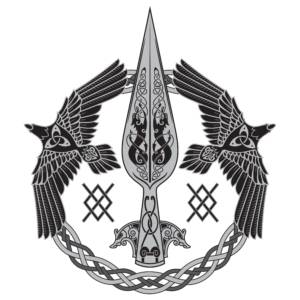
Followers of Asatru draw inspiration from contemporary practices to create their own beautiful and meaningful nuptial celebrations.
While Statistics Canada doesn’t explicitly count our country’s Norse pagan population, Heathenry continues to gain popularity. As new followers join local kindreds and adopt in-home religious practices, they learn about and pass on the faith’s rituals and traditions. With more Asatru weddings occurring in Canada, Norse pagans delve into older source materials and draw inspiration from contemporary practices to create their own beautiful and meaningful nuptial celebrations.
Religious and Ceremonial Customs Can Be Diverse
Modern Asatru’s origins began more than four decades ago. Washington Post reporter Terrence McCoy explains that the revival of old Norse religious traditions started with the 1972 founding of the Asatru Association in Iceland. While many cultural customs were transmitted through word-of-mouth, present-day pagans have derived some worship and ceremonial practices from a few key source texts:
- The Poetic Edda, a vast collection of epic poems sourced from a medieval Icelandic text known as the Codex Regius
- The Prose Edda, a 13th-century volume of narratives about Norse mythology and religious beliefs compiled by Icelandic scholar Snorri Sturluson
- Heimskringla and Landnámabók, two historical sagas also penned by Sturluson
Contemporary scholars mostly regard much of these works’ content as historical fiction rather than factually accurate accounts. BBC Religions points out that they were composed or compiled after Scandinavian Europe had converted to Christianity during the 11th and 12th centuries. However, they still provide cultural insights. Heathens today have developed diverse kinds of spiritual, ritual, and ceremonial practices from these writings and other folk traditions, with details shifting and changing as they’re transmitted from person to person.
Common Ceremonial Elements
Two organizations based in the United States, The Asatru Community and the Kindred of Ravenswood, have documented modern Heathen wedding customs. The Asatru Community published a detailed description of a typical Norse pagan wedding in a March 2018 blog post, while Kindred of Ravenswood member Chris Haviland offered a basic ceremonial outline along with some common traditions.
While there are a few differences between Haviland’s and the TAC’s versions, both follow a somewhat similar order of services. First, a Norse pagan wedding usually begins with the officiant hallowing the ceremonial space. The Asatru Community explains that this can be done by blowing a calling horn and smudging the area with sage, while Haviland mentions that the officiant may perform a blessing rite before the wedding party and guests arrive.
Once the couple has processed in, the ceremony itself begins. It generally includes readings, followed by the couple’s recitation of vows and either an exchange of rings or a handfasting ritual in which their wrists are tied together by the celebrant. Haviland’s account mentions a few additional elements:
- The couple ritualistically eating a small cake and drinking mead
- An exchange of keys or swords, which is based on an older Norse practice of the bride and groom trading each other’s ancestral swords
- The clergy member blessing the bride with a Thor’s hammer
Modern documentation of Norse wedding customs usually mentions heterosexual couples tying the knot. Nevertheless, they have been adapted for same-sex unions. A May 2015 Reykjavik Grapevine article mentions that many same-gender couples marrying in Iceland have traditional pagan ceremonies performed by Asatru Fellowship officiants.
Revived Customs With Deeper Meanings
Like marriage rites from other cultures and faiths, Norse pagan weddings are packed with traditions, symbolism, and meaning. When each couple comes together, they bring their families’ histories and legacies with them. At the same time, their loved ones’ hope for their good fortune is conveyed through the officiant asking for blessings from the gods, spirits, and ancestors. Although different versions of Heathen nuptial rituals exist, the final intent is similar: witnessing a new union’s beginnings in front of their larger communities.


